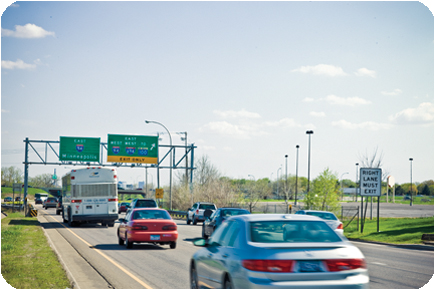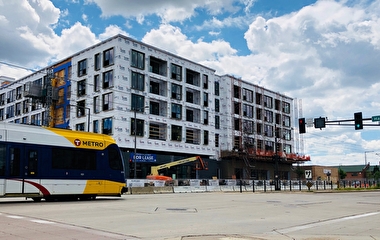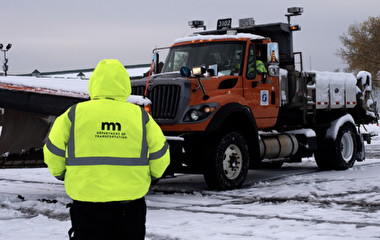Something unprecedented has happened to Americans’ travel patterns. Even before the recent recession, total distance traveled per person had started to decline, and the rate of total vehicle travel had begun to steadily decrease as well.
In a new five-part series of research reports sponsored by the Minnesota Department of Transportation and the Metropolitan Council, U of M researchers are delving into a set of rich data encompassing more than four decades of travel behavior surveys to enable the region’s transportation planners to better understand how its residents make decisions about whether, when, where, and why to travel.
In the first study, researchers examined how changes in the accessibility of destinations—such as jobs, shopping, and leisure activities—have changed travel behavior in the past 20 years.
“We started with a detailed analysis of travel surveys conducted by the Metropolitan Council in 1990, 2000, and 2010,” says David Levinson, the study’s principal investigator and RP Braun/CTS Chair in the Department of Civil, Environmental, and Geo- Engineering. “We found that people are spending slightly less time in motion and more time at home. We also found that accessibility is a significant factor in determining not only travel behavior but overall time budgeting in general. In short, each person has to decide how they will use the time allotted to them each day, and many of those decisions are directly related to the transportation and land-use systems in place.”
A deeper look into the data sheds additional light on the relationship between accessibility and travel behavior. For example, trip durations for workers have gone up for all activities between 1990 and 2010. More noticeably, distances for trips have increased markedly: workers take jobs farther from their homes and shop farther from their homes. Travel speeds also increased for the average worker, due to more travel on faster suburban roadways that carry a larger share of all travel. In contrast, for non-workers, trip durations and overall travel time have gone down.
“Interestingly, although time, distance, and speed per trip has generally risen for workers, the number of those trips is declining,” Levinson says. “As a result, overall, fewer miles are being traveled and less time is being allocated to travel.”
Total time spent shopping also decreased for workers and for males, likely caused in part by an increase in online commerce. “The Internet has provided electronic accessibility, much as the transportation network has in the material world,” Levinson explains. “It helps to facilitate commerce, communication, education, and leisure. This may lead to a decreased need for people to travel, and account for more time spent at home.”
Jonathan Ehrlich, planning analyst with the Metropolitan Council, says the research “helps us get more value from our travel surveys and will aid in understanding how travel is changing, and what the risks are in the assumptions and models we use for planning and forecasting.”
The findings will prove useful not just for Twin Cities transportation planners but for planners and engineers worldwide. “Our models can be easily adapted to data from other cities or for other activities besides work,” Levinson says. “This creates an approach that can be used to gauge the impact of a transportation project from an accessibility standpoint and determine how that project will translate into time allocation.”
Other parts of the study will look at changes in telecommuting behavior over time, the effect of transit quality of service on people’s activity choices and time allocation, changes in travel behavior by age cohort, and analysis of bicycling and walking in light of land-use and transportation system changes. The Catalyst will feature coverage of these projects as they are completed.




